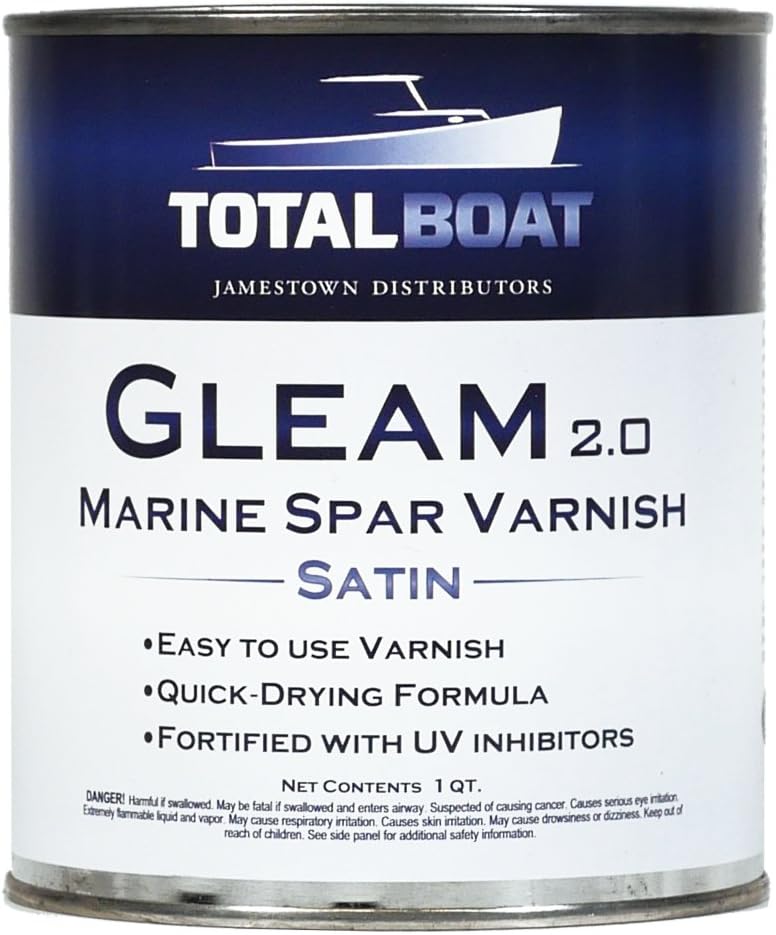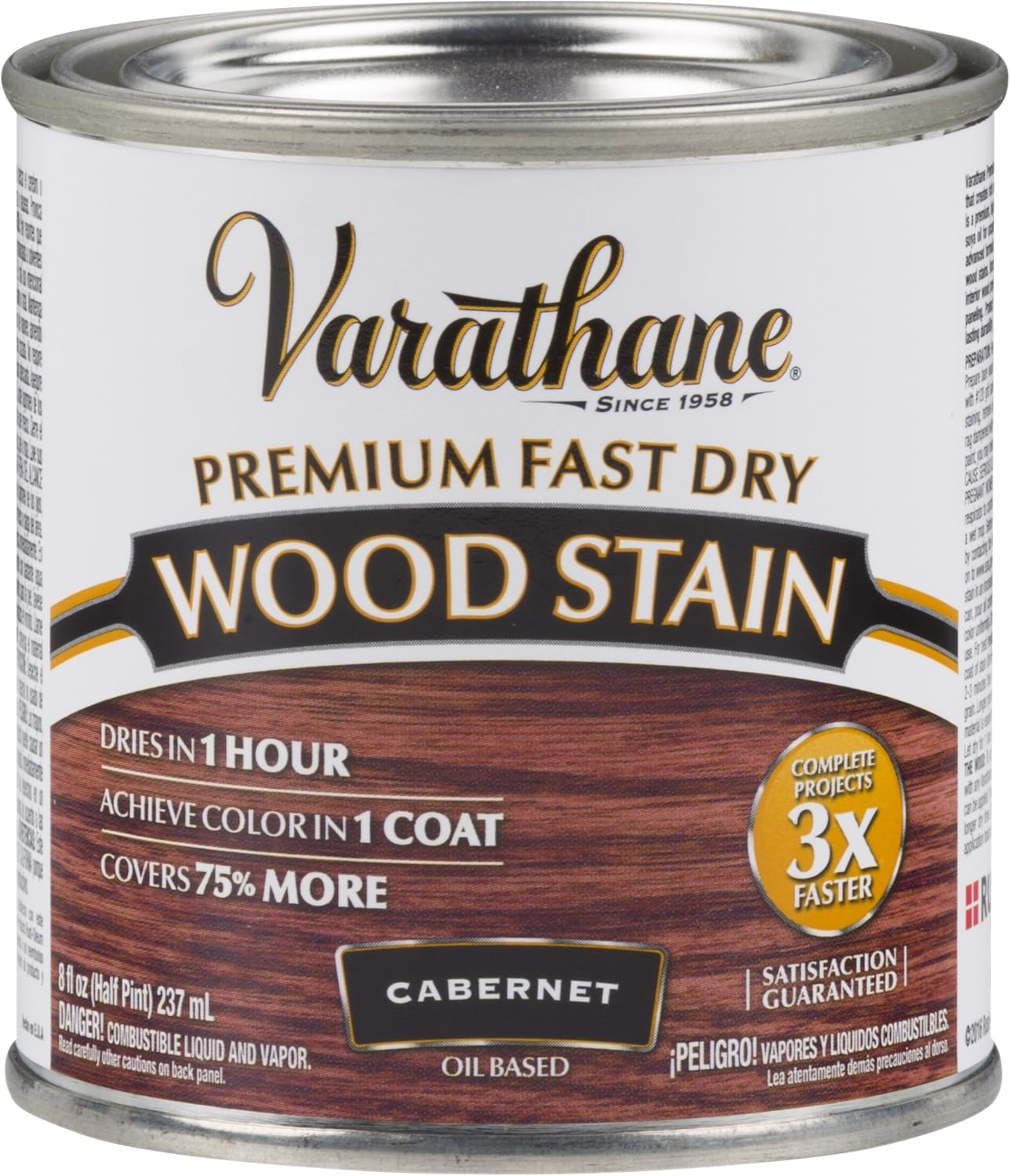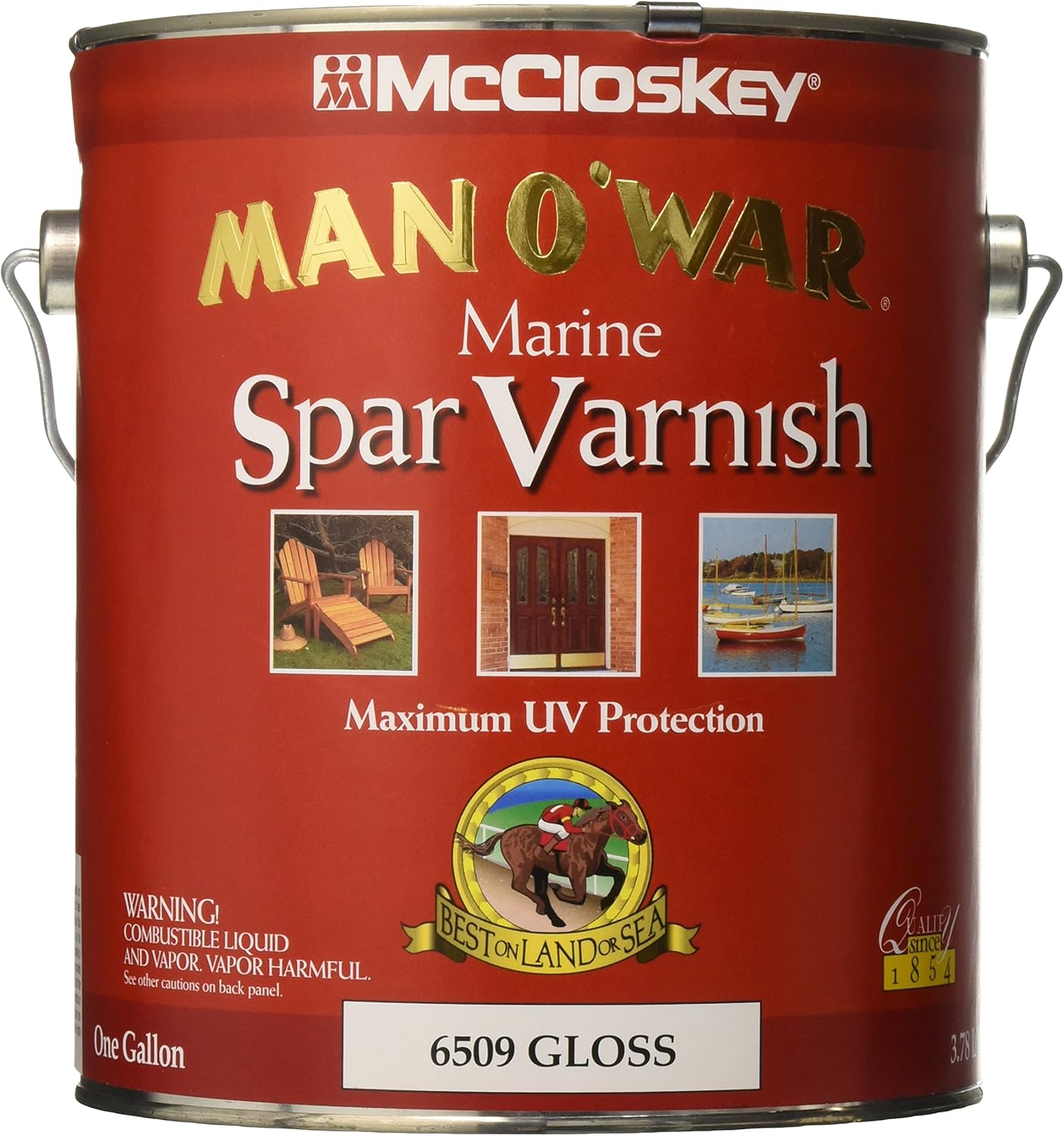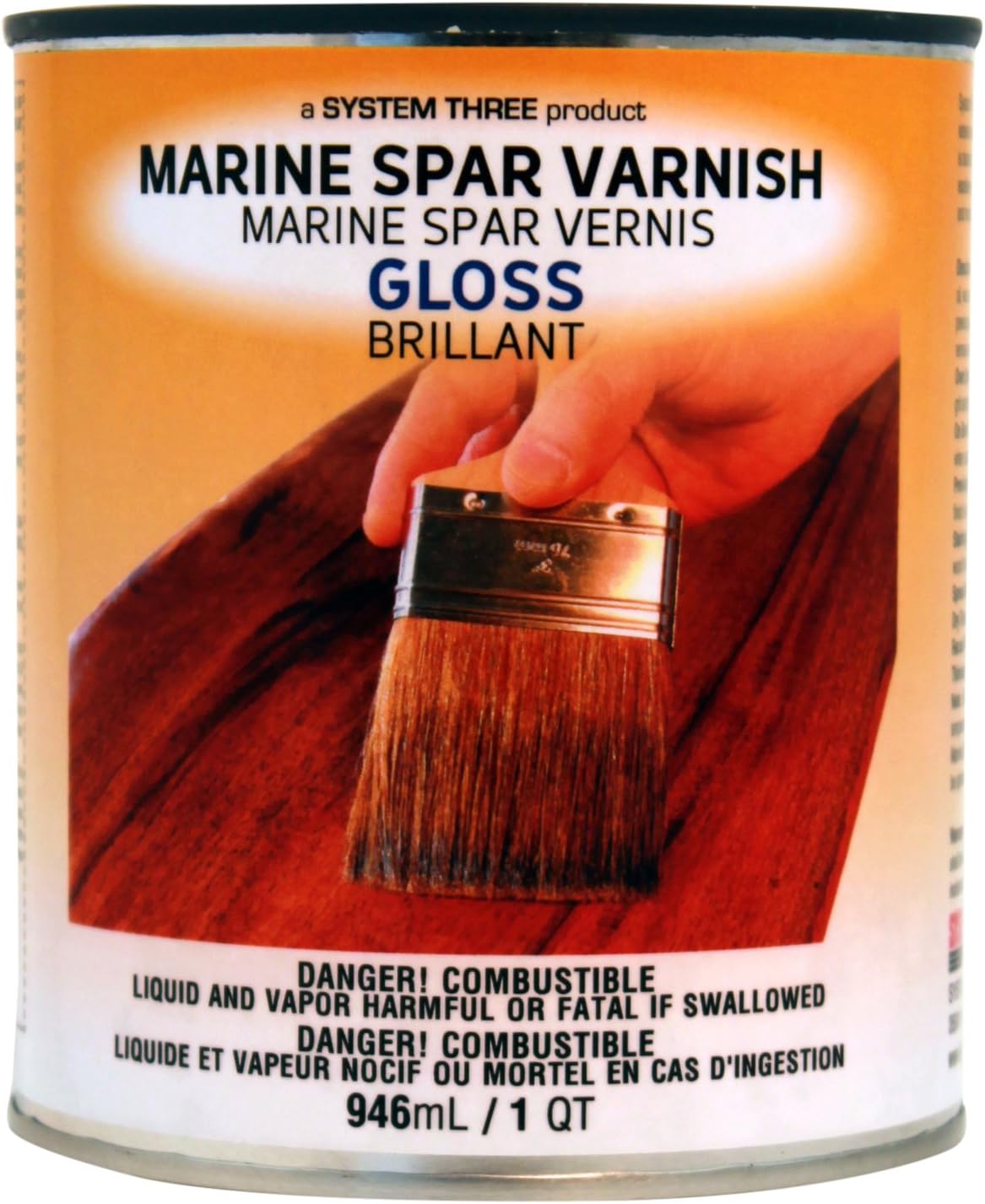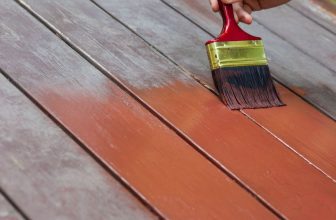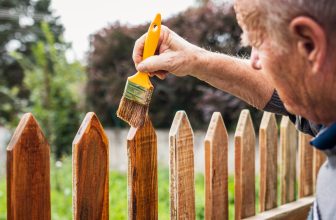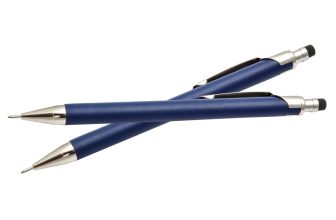Contents
After putting hours into a woodworking project, choosing the best varnish to finish the job can be a daunting task. The best varnish will not only bring out the natural beauty of the wood but add some protection as well.
I’ve used countless varnishes for a variety of wood types and projects, and I put together these reviews of my favorite products. These, along with my buyer’s guide, should help you choose the most appropriate varnish for your piece.
Best Varnishes for Wood – My Top Picks
BuildEazy.com may earn a commission if you purchase a product through one of our links.
TotalBoat makes varnishes and products specifically designed for use on boats, and they specialize in waterproofing materials.
This is a polyurethane finish that is thin and light, making it easy to brush onto your project. It’s far easier to apply than varnishes that require a rag. It goes on smoothly and evenly.
It dries quickly and is ready to be re-coated in about an hour. This means you’ll spend little time waiting for the varnish to cure and can apply multiple coats in a single day for faster results.
This poly is clear and won’t change the appearance of your wood much. It comes in a satin and gloss finish, each of which will make the grain pop and darken the wood surface to make it stand out.
This is a highly waterproof coating that is perfect for projects like lawn furniture that will remain outdoors. It also provides UV protection to help reduce fading on your projects. It is somewhat expensive, but the added protection is worth the extra cost for many woodworkers.
As with most varnishes, the fumes from this product are strong and potentially dangerous. When applying this product, always wear a mask or respirator and always use it outdoors or in a well-ventilated area.
Rust-Oleum 207008 Marine Spar Varnish
Rust-Oleum is a well-known and trusted name for paint, polyurethane, and other protective coatings, and their products are used across multiple industries.
This is an oil-based spar varnish, so it’s a bit thicker than water-based polyurethanes. It’s still relatively straightforward to apply, and it can be wiped or brushed onto your project.
This varnish soaks deep into the wood surface, which means that the drying time is longer than with most other options. I found that it still wasn’t dry to the touch after about an hour and a half, and the manufacturer recommends two full days for each coat to cure. It will likely take you quite a while to apply multiple coats if you need them.
It dries clear with a glossy appearance and will bring out the natural beauty of the wood you used.
This varnish is intended for use on boats, which means it’s very durable and waterproof. It provides UV protection and resists mildew formation as well. It’s an excellent option for outdoor projects or those that will be exposed to moisture changes.
It expands and contracts with your wood, so it’s unlikely to crack or separate, even in harsh conditions.
This varnish emits potent vapors that you should avoid breathing, so make sure to wear proper safety equipment when applying it.
Rust-Oleum 262025 Varathane Premium Stain
This is a rich wood stain that will add beautiful, deep color to your projects. It comes in a wide variety of colors. I’ve used several of them and have been pleased with the saturation and final appearance of the projects on which I’ve tested them.
This stain is oil-based, but it’s relatively thin. It’s straightforward to apply with a brush or rag.
It sets very rapidly, and I found it dry to the touch within about an hour of applying it and wiping it clean. It can take up to 24 hours to cure fully. You’ll likely only need one coat, given how rich the color is, so this varnish helps save time on the application process.
It drastically changes the appearance of your project, as do all stains. It will add color and bring out the grain, but you may need to apply a polyurethane or other protective coating over the stained wood once it cures. This stain doesn’t offer any protection from the elements, and it won’t add a glossy, finished appearance to your piece.
It isn’t waterproof, so it’s not suitable for outdoor projects. However, you can use it in combination with poly for outdoor furniture, decks, or swing sets.
This varnish produces some pretty strong fumes, so make sure to take the proper precautions when using it.
McCloskey 7505 Man O’ War Spar Varnish
McCloskey is known for manufacturing highly protective varnishes for wood projects that are exposed to harsh conditions.
Their Man O’ War product is a spar varnish that’s intended for use on boats. As such, it’s made to be extremely durable and can stand up to constant water exposure. This is one of the best varnishes for use on exterior furniture. However, it doesn’t resist physical wear very well, so it’s not ideal for surfaces that get foot traffic or may get scratched.
It’s a relatively thick, oil-based protective coating, but it’s thin enough to apply with a brush. I also recommend brush application, as it shouldn’t come in contact with your skin.
It takes about 4 to 6 hours to be dry to the touch, and it cures fully within 24 hours. You’ll likely only need one or two coats for the best protection, so despite the long curing time, this varnish is faster to apply than many others.
It dries mostly clear but will darken your wood a bit. I found that it makes the grain stand out a little more and puts a beautiful, semi-gloss finish on the surface. It’s excellent for highlighting the natural beauty of cedar or other hardwood projects.
This varnish is highly waterproof, and it also protects against UV and salt damage. It will keep your projects looking new for longer, even in harsh conditions.
It’s banned by the EPA in several states because McCloskey makes this with volatile organic compounds. It’s unsafe to breathe, so be very careful during use and always wear a respirator when applying. The odor is powerful and will persist for several days, so I only recommend it for outdoor application.
McCloskey 6509 Voc Mow Spar Gloss
This varnish from McCloskey is oil-based and about the consistency of honey. It’s a bit more challenging to apply, but you can still put it on with a brush for a relatively smooth finish.
It’s a clear-coat varnish that you can either apply to painted surfaces for protection or untreated wood for both protection and a beautiful, shiny finish.
It takes quite a while to soak into the wood and dry, so you should plan to wait about 24 hours for the varnish to cure. It goes on reasonably thick, so you’ll likely only need a single coat.
Once it’s dried, the coat is entirely clear. It will darken the appearance of unstained projects a bit, but I found that it brings out the wood’s natural beauty. It has a gloss finish and will make your stock shine.
It’s made for use on boats, so it’s highly waterproof, UV resistant, and won’t wear away quickly in response to salt and other chemicals. This varnish adds some of the best protection possible.
It contains volatile components, so you’ll need to take every safety precaution possible when using this product. You should only apply it outdoors, as the odor is strong and can last for several days.
Epifanes Clear Varnish
Epifanes is a company from Holland that produces high-quality, high-durability varnishes intended for use in marine conditions.
This is a clear-coat varnish that is relatively thick. Although it can be applied as-is, I recommend thinning it before use for the most effortless application. You should have no problem painting it on with a brush, even if you don’t thin it first.
It dries very slowly and typically requires several coats to get the best protection for your project. As such, this will take a relatively long time to apply correctly.
It goes on and dries clear. While it won’t tint or stain painted surfaces, it is likely to darken natural wood a bit. I found that my projects’ grain pattern and quality were elevated with this varnish, and it’s one of the most beautiful protective coats I’ve used.
This is a spar varnish that provides a robust waterproof layer. It’s resistant to UV radiation and salt, so you can use it on just about any project, indoors or outdoors.
The fumes from this varnish can be hazardous, so you’ll need a respirator or a face mask when applying it. I strongly recommend you only use this product outdoors or in a very well-ventilated area.
System Three 1850S16 Clear Marine Spar Urethane Varnish
System Three makes reliable wood varnishes, hardeners, and protective coatings for a variety of projects.
This is an oil-based urethane varnish that is thin enough to paint on with a brush. The application is very straightforward and shouldn’t take much time at all.
It takes quite a while to dry, and I recommend waiting a full day in between coats. It will be dry to the touch within about 6 hours, but curing takes longer.
It goes on clear but will change the appearance of the wood you’re applying it to a bit. It will darken the surface, and depending on whether you choose the gloss or satin finish, it will make your project look shiny and beautiful or give it a matte look.
This varnish is intended for use on boats, so it provides a highly waterproof layer, protection from UV radiation, and protection from salt. It will leave any indoor or outdoor project protected and looking professionally finished, even if it’s exposed to harsh conditions.
Although it’s VOC-compliant, it gives off potentially harmful vapors that you shouldn’t inhale. You’ll need proper protective gear when applying this clear coat.
Buyer’s Guide
Varnishes for wood surfaces come in many different forms, each designed for a particular application. Some are best for waterproofing your projects, while others are meant solely to bring out the natural beauty of your wood. Ensure you keep the below factors in mind when choosing a varnish, as these will affect your projects’ look and longevity.
Types of Varnish
There are a few different kinds of varnish from which you’ll need to pick. The best varnish is the one that is ideal for your time constraints and will bring the most beauty to your project.
Acrylic Varnish
Acrylic varnishes are water-based, which means they’re thinner, more comfortable to apply, and easier to clean than oil-based options. They dry rapidly and can often be handled in just an hour or two. They don’t soak into the wood and instead create a layer on the surface, so they are best for those looking for moderate protection. They may darken natural wood a touch, but they won’t yellow or discolor the wood or paint they’re used to protect.
Exterior Varnish
Exterior varnishes are made to protect projects that you intend to keep outdoors or in high moisture areas, like bathrooms or some kitchens. They are often oil-based and soak deep into the wood to create a thick, waterproof coating.
They usually offer UV protection to prevent fading from sun damage, and some are mildew-resistant.
They generally take a long time to dry because they are oil-based, and they may need multiple coats, especially if you use them on less porous hardwoods.
They are usually clear but can cause some discoloration or darkening on natural or painted wood.
Polyurethane Varnish
Polyurethane varnishes are topical clearcoats that dry reasonably quickly. They don’t soak into the wood, but they form a durable, protective surface on top that resists physical wear.
They offer moderate protection from moisture and liquids, so they’re commonly used on projects like dining room furniture that may experience water but isn’t continuously exposed to it. They usually don’t offer UV protection either, so they’re best for indoor projects.
Spar Varnish
Spar varnish, also called yacht varnish, is often oil-based and is made to protect surfaces that experience constant exposure to water, salt, and sun. They soak slowly into the wood to create a highly waterproof protective layer. They resist UV radiation and will keep outdoor projects looking new for long periods.
They don’t provide much physical protection, so they’re not suitable for surfaces that will be exposed to foot traffic or scratching.
Alkyd Varnish
Alkyd varnishes are made with alkyd resin, a thermoplastic polyester that can stand up well to heat and sun exposure and offers light water-resistance.
The term “alkyd varnish” may be used for various other varnish types since many protective coatings take advantage of the natural protecting capabilities of alkyd resin.
Shellac
Shellac is most often used as a penetrative ingredient in other varnishes. It’s made from a waxy resin secreted by the lac bug, and it’s usually mixed with other topical treatments to help them soak into the wood to provide better protection.
Lacquer
Lacquer is a thin, non-curing varnish that offers little protection for your project. However, it will provide a high-gloss finish on most surfaces and can lead to a very professional-looking finish.
Lacquer is most often and most efficiently applied with a high-volume, low-pressure spray gun rather than a brush or rag.
Drying Oils
Oils aren’t technically varnishes, and they don’t offer any protection to your project. However, they alter the appearance of wood and bring out the natural beauty of the grain.
Common drying oils include tung oil and boiled linseed oil, both of which can take quite a long time to dry thoroughly.
Varnish Ingredients
Most varnishes contain three main ingredients in varying ratios that determine how well they protect and how quickly they soak into the wood and dry.
Varnish Oils
The oil in a varnish mostly determines how readily it will absorb into the wood. Varnishes with little or no oil barely soak into the grain and will dry quickly as a consequence. Oil-based varnishes have a higher oil ratio, soak deep into the wood, and take many hours or even days to dry.
The oils most commonly used as a base in varnish are linseed oil and tung oil. They cause a bit of discoloration in some cases, and they generally make natural wood appear a bit darker.
Resin
Resin can refer to quite a few compounds. Tree resin is an organic secretion that trees use to heal and prevent further damage to their hard exterior. Resin can also be secreted by insects, like the lac bug I mentioned before. It can also refer to synthetic compounds comprised of polymers or other plastics.
The type and ratio of resin in a varnish determine the coating’s protective qualities. A high proportion of resin to the other main ingredients can create a durable coat that resists physical wear. A lower concentration of resin can soak into the wood and help create a waterproof seal.
The type and amount of resin used to make a varnish also affects how your wood’s appearance will be changed. For example, synthetic resin tends not to discolor wood quite as much as organic resin.
Solvent
Varnishes also include solvents, sometimes referred to as thinners. Resin and oil mixed in any ratio will be far too thick to apply easily. The solvent, which can be anything from water to alcohol, dilutes the mixture. A high proportion of solvent to resin and oil will make a less potent and protective varnish but straightforward to apply with a brush. The solvent evaporates once applied, and the resin and oil remain behind to protect your project.
You can add additional solvent to a varnish to make it easier to apply. To get an idea about how to do this, check out this video:
Varnish Hardening Properties
Varnishes harden in one of two ways depending on the ratio and type of the three main components.
Rapid Hardening
Rapid hardening occurs when the oil and resin’s liquid properties are determined by the solvent’s presence. Solvents make the varnish application simple, but they evaporate rapidly when exposed to air. The oil and resin left behind harden in a short amount of time, leaving the surface dry and moderately protected.
Slow Hardening
The oil and resin in slow-hardening varnishes continue to interact even in the absence of the solvent. Once the thinner evaporates, the other two components seep into the wood and harden slowly. The hardening process can take several days, but the result is often a highly waterproof protective layer.
Tips to Apply Varnish
Surface preparation is important for a professional-looking finish. I recommend starting to sand at 100-grit and gradually work your way down to 320-grit sandpaper. Once the surface is smooth, wipe your project with water and let it dry. This process makes any loose grains stand up.
To see how this process works, check out this video:
Once your surface dry, sand again with 320-grit or 400-grit sandpaper. Make sure to wipe off any sawdust, as it can ruin the look of a varnish and require re-application.
To get an idea of how this process works, check out this video:
I recommend you apply your first coat with a 10%-diluted varnish. You can dilute with mineral spirits or water for water-based varnishes. Applying the initial coat with a cloth will help get the solution into the wood grain. Wait for the coat to dry completely according to the manufacturer’s instructions.
Sand your project with high-grit sandpaper. I recommend using 1,000-grit or higher. Apply a second coat of undiluted varnish and let it dry fully before you handle your pieces.
Varnish Vs. Polyurethane
The word “varnish” is an umbrella term that refers to a multitude of products. Polyurethane, lacquer, shellac, and clearcoat can all be called varnishes.
Polyurethane is a particular kind of varnish that tends to dry quickly, provide good physical protection, and offer moderate protection from water. It’s essentially a liquid plastic that dries to form a clear coating on your wood.
Recommendation: How to Prevent Leftover Varnish from Drying at the Top of the Can
Any woodworker who has poured varnish or paint from a can knows how frustrating it can be to have the liquid dry in the groove that holds the metal lid. The best way I have found to prevent this is to use a removable plastic spout. You can find them online or at your local home improvement store, and they’re very inexpensive.
Safety Concerns
Before even opening the can of varnish you plan to use, you must take proper safety precautions. Varnishes often contain volatile organic compounds that make the fumes unsafe to inhale. Always wear a face mask at least, and I recommend you get even more protection with a respirator.
I strongly suggest you only apply varnishes outdoors. If you must be inside when you work, make sure the area is well-ventilated. If I’m forced to apply varnish indoors, I open all the doors and windows and set up an exhaust fan to push air outside. Even with these precautions, I still wear a respirator.
Frequently Asked Questions
Is It Better To Varnish Or Paint Wood?
It is common to put a coat of either varnish or paint on wood to protect it and alter its appearance, but which one is better?
Varnish is a hard protective finish that is transparent, making the natural grains of the wood visible which is what makes it the preferred choice by some.
There usually isn’t any pigment in varnish but some are marketed as stains which can make the wood slightly change shade or even color.
Paint is a liquid that has been pigmented with whatever color and when applied to a material such as wood, it creates a solid film and covers the natural appearance of the wood.
Paint can be used to protect or color wood and can come in different variations which alter its finished look.
Before you use paint on wood, it is typically required to put on a primer coat so that the paint won’t peel off easily whereas you can put varnish on straight away as long as there isn’t a lot of dust sitting on the wood.
Paint that has been sprayed on takes about an hour to dry which can increase to eight hours if the paint is oil-based. Varnish can take up to 24 hours to dry, but some varnishes have a formula that is water-based which typically dries much quicker.
For interior use, you don’t need to worry about protecting the wood from the elements as much so both varnish and paint will suffice with protecting against solvents and water.
If you are painting wood that is outside, you will be better off using paint as it lasts at least five years longer than varnish and protects the wood to a higher degree as the pigments in paint has UV-resistant properties that varnish does not have.
Is Varnish Better Than Polyurethane?
Polyurethane is like varnish in the way that it is a transparent, protective substance that is usually used to coat wood. The polymers in the polyurethane are what cause it to have exceptional durability.
There are two different types of polyurethane – oil-based and water-based which both have their pros and cons. Polyurethane that is oil-based is more durable but can take a long time to dry which often takes more than a day to finish two coats.
You can expect to spend several weeks waiting for oil-based polyurethane to finish its two-phase hardening process which is also known as curing. Water-based polyurethane is not as durable, but it dries in just a few hours and cures in around two weeks.
It also smells a lot less harsh than oil-based polyurethane and contains little to no VOCs (volatile organic compound emissions) but you should still wear a ventilator mask when working with it.
Both varnish and polyurethane are applied in the same way and contain a lot of the same ingredients.
They also look the same once they have dried as they are both transparent but in terms of levels of protection polyurethane is a bit more resistant to abrasions, but varnish does better at preventing UV light damage and harsh weather.
Both varnish and polyurethane are waterproof and do well at preventing rot, mildew, fungus, and pests. If you live in an environment that is non-climate controlled, then you should go with varnish instead of polyurethane as varnish allows the wood to breathe and flex.
Polyurethane is still a good choice for indoor furniture though and varnish is best suited for exterior use as the odor can be very unappealing.
Is Wood Sealer Better Than Varnish?
It depends on what project you are working on but generally, wood sealer is better because it is suitable for any surface whereas varnish should only be used on surfaces that are indoors as it is an environment that is better controlled.
Wood sealer also has the ability to prevent timber warping by applying it to the ends of the wood which is where the water leaves the wood fastest from.
This is not the only benefit that you can get from using a sealer on the ends as it also stops them from shrinking faster than the rest of the timber which can then cause more warping.
What’s The Difference Between Wood Sealer And Varnish?
If you are not familiar with what sealer is, it is essentially a combination of oils and resins that has a lower viscosity than varnish, meaning that the sealer is able to sink into the wood and protect it from the inside out instead of sitting on top of it.
Sealer is often applied over the top of stained and unstained wood and seals the pores to make a smooth surface ready for lacquer or varnish.
You must apply three coats of sealer allowing the first coat to sink down into the wood, the second coat works with the first one to create the seal, and then then the third coat is what makes the surface resistant to water, scratches, and heat.
On the other hand, varnish offers protection from moisture by sitting on the surface of the wood.
It doesn’t matter what kind of timber it is or if it is inside or outside, you can still apply the sealer to it which is where the varnish is less flexible as you need to get a varnish that is specifically made for indoor or outdoor use.
You can get wood sealers that are made especially for outdoor use as they have UV stabilizers added into the formula which can also prevent fungus and mold.
Do I Need To Seal Wood Before Varnishing?
There is some confusion around when to seal and when to varnish but frankly, you should seal your wood after you varnish otherwise you won’t be able to varnish at all.
This is because wood seal is made to seal the pores of the wood and create a smooth surface, but this is where the issue comes in because varnish needs pores to soak into. Therefore, if you seal and then varnish, the varnish will just sit on top and not take to the wood.
However, there are instances where you may be better off sealing before varnishing which is when you have some discrepancies in the wood grain that you’re hoping to make less visible.
This can be done by applying a layer of varnish followed by a layer of seal and then another layer of varnish so that the product sinks into some but not all the pores.
Is It Better To Wax Or Varnish Wood?
Similar to stain and varnish, wood wax is used to protect wood from moisture and hold onto color for a longer time.
This method has been popular for a while and is still a go-to for a lot of people as it can offer a lot of benefits even though a lot of modern finishes are resistant to scratches and moisture.
If you have old wood that has gone past its prime, then you can try using wax to bring it back to life a bit by giving it a fresher appearance.
The benefits of waxing wood are that it looks good, feels smooth, and works on almost every type of hardwood. Depending on what kind it is, wood wax is non-toxic and is also environmentally friendly whilst still being strong enough to penetrate through layers of wood which offers great protection.
As well as this, wood wax is very easy to apply. To prepare your interior wood for waxing, you first have to make sure that the wood is free from oil, wax, and grease and sand down the surface, and wipe it down with a wet cloth before waiting until it has dried completely.
The wax must be stirred well before being used and brushed onto the surface in the direction of the wood grain. Three coats of the wax are ideal, and you must wait an hour between each layer so that they full dry.
Once you have applied the final coat, you just have to wait for it to fully dry, and you will be ready to use the furniture as you wish.
Even though wax has its advantages, it is not perfect and falls short in some areas. Wood wax is not as durable as the modern, popular polyurethane finish.
If you choose to use wood wax, you will also have to prepare to maintain it more with a fresh layer being applied every year which over time can add up and look a bit dull.
Even though it is great at penetrating layers which is a great advantage for protection, it makes it hard to remove and can end up staining the wood.
With wood wax, you sadly won’t be able to avoid cup ring stains as wood wax is not resistant to heat damage and if you don’t use coasters, your coffee table will be full of them in no time.
Varnish can act as a barrier between you and the wood when you touch it as it is masking the natural feel of the wood that wax can maintain and even accentuate. Having said this, varnish offers more protection against moisture and wear.
Even though wax is still pretty easy to use, there still is a bit of a learning curve and some may turn to varnish instead, but if you are not careful, the varnish can drip and pool which is hard to fix once it has dried.
This is not the same with wood wax, which is very forgiving and gives you the ability to go over any mistakes – very enticing for beginners.
On certain woods, varnish is more prone to staining and bleeding through compared to wax which is more adaptable.
Tannins can be pulled from the wood when the varnish dries which results in pink and orange stains in the finish which is why it is recommended to do a patch test beforehand if you are experimenting with a new type of wood.
Wax takes around two weeks for it to cure whereas varnish takes a month which is not practical for a lot of people.
With all of this in mind, if you are working on interior wood, it is best to use wood wax because it feels nice to the touch, offers protection to the wood, is very easy to use, is non-toxic and environmentally friendly, and will only take two weeks to cure.
If you are hoping to wax a coffee table though for instance, then you would be better off using varnish unless you have plenty of coasters on hand.
Should I Oil Or Varnish Wood?
There are various things that you should think about when deciding if you’d rather oiled or varnished wood.
If you use oil, it is easy to repair little spots here and there and is overall easy to maintain which keeps the wood looking fresh.
Using oil is not foolproof though as even when the oil has cured, it will still be semi-porous leaving it more vulnerable to things such as water spillages and bicycle wheels.
Varnishing is better for wear and tear especially when a few layers have been applied and if water is spilled, it won’t cause any damage if cleaned up before too long.
However, wood that has been varnished cannot be spot repaired like an oil finish and if it suffers from one big scratch, the entire thing will have to be sanded and re-surfaced. Therefore, varnishing is the better option in comparison to oil.
Wrapping Up: Which Wood Varnish is Best?
As I’m sure you can see by now, there is no such thing as the perfect wood varnish. Different types offer varying levels of protection. If your project will get a lot of physical abuse, you’ll use a different varnish than you would for a piece that will be outside in the sun and rain. The varnish you choose should be selected for your specific project.
However, my favorite varnish overall is the TotalBoat Gleam Marine Spar Varnish. It’s a breeze to apply, it creates a robust, waterproof seal, and it protects wood from sun damage, leaving projects looking new for longer.

